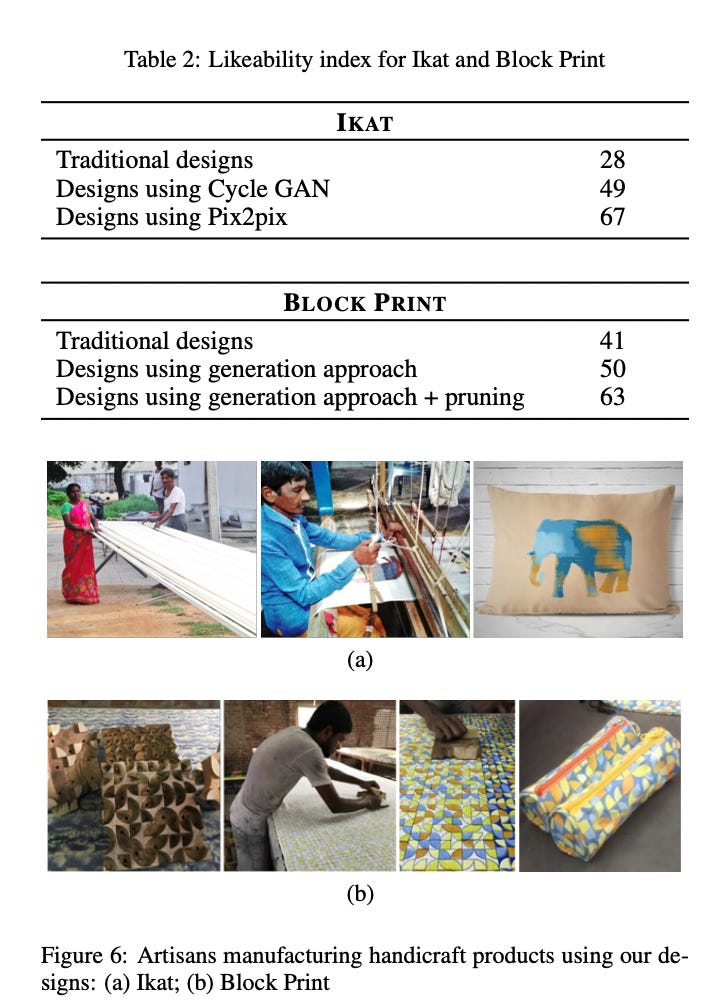The Tech Dispatch #1: How AI Will (Truly) Impact Fashion, Artisanship & Sustainability
In this new series we look at AI promises, AI deployment and AI impact across fashion and artisanal value chain + everything we are reading on this topic
"Harnessing machine learning can be transformational, but for it to be successful, enterprises need leadership from the top. This means understanding that when machine learning changes one part of the business , the product mix, for example, then other parts must also change."
- Erik Brynjolfsson, Stanford Institute for Human-Centered AI
Welcome to one of the the most pressing topic in Tech these days, and the steam engine equivalent of our times: Artifical Intelligence. If you think brands are getting better at reading your mind know that there is some level of AI-deployment at stake.
With AI adoption in consumer and apparel companies rising from 20% to 44% in the first half of 2025, the competitive landscape continues to evolve rapidly.
What does AI-adoption even mean and where are we seeing more impact?
I spent time digging through annual reports from major consumer companies – Nike, LVMH, L'Oréal, Inditex, you name it – looking for how they plan to actually deploy AI. I’ve also have anecdotal insights from conversations spanning months with smaller business and how they envision the usage of AI and how it has been impacting hiring and talent selection.
What I’ve been finding is that we're watching a complete reshaping of entire industries. So what does it mean for an industry as labour intensive as fashion?
In this series, we touch upon all those things. Let’s go.
Broadly Speaking, here’s what you should expect
Can AI in fashion supply chain reduce greenhouse gases?
Brands are moving along - there are several use cases for the use of AI within fashion’s value chain that can potentially show a drop in GHGs.
One report published in ScienceDirect and Earth.org establishes that AI-driven production optimisation directly correlates with a reduction in the 10% of global greenhouse gases attributed to fashion’s carbon footprint - a bold claim.
However we are seeing some of this already in action. Notes below:
Refiberd’s textile recycling robots, now used by Stella McCartney, scan fibers with machine vision, sorting with 98% accuracy to boost circularity.
Refashion, Chile’s first sustainable fashion startup, partnered with Theodora AI to build Octavia, an AI system for sustainable & ethical fashion.
Octavia’s main capabilities:
Predict demand more accurately to avoid overproduction.
Optimise production workflows to reduce fabric waste.
Detect and mitigate biases in design and marketing (related to race, body size, gender).
Tailor more inclusive designs and campaigns
Indian Artisan Village x AI
While Gen Z seems to be clued into the value of artisanship to a large extent, there is always a stress of some of these crafts going outdated due to depleting income for artisans. To address this, the authors of this research, propose AI-based methods that generate fresh, contemporary designs inspired by traditional motifs, making handicrafts more appealing without losing their cultural essence.
Their approach combines generative models and rule-based techniques to create new motifs, apply modern colour schemes, and filter out weak designs. For Ikat, they use deep learning (pix2pix GANs) and colour transfer methods to modernise motif colorisation, while for Block Printing they employ geometric rule systems and pruning models to ensure quality.
Evaluations with young consumers show that AI-generated designs are significantly more liked than traditional ones, suggesting real potential for boosting artisans’ economic opportunities.
Similarly, Refabric’s AI-powered digitisation engine records endangered motifs, linking handicraft heritage from Guatemala to Vietnam on new digital platforms.
[Full disclosure, I’m fundamentally opposed to the idea of the Prompt to Design and features like this. In this AI landscape there is nothing stopping a brand from ripping off design from another, without credit or compensation. Secondly, we need to explore the guardrails for cultural appropriation and misuse of heritage designs. More on this soon in the series.]
Can we expect fair wages and more accountability?
The readymade garments industry of Bangladesh contributes about 80% of the export earnings and is currently positioned second worldwide in exporting clothes and fabric industry. Besides these accolades, it is probably also the most exploited when it comes to labour rights and protection. With the deployment of AI called “Aamra Vision”, a system that inspects garment quality via computer vision, Bangladesh aims to flag defects and improve factory efficiency. However, research from the Global Fashion Summit notes that collective wage bargaining (ACT) is essential: AI alone cannot guarantee fair pay.
Empirical studies published at IEOM confer that AI safety monitoring reduces workplace accidents, yet also push policy-makers to enact wage protection before algorithmic decision-making dominates factories.
What happens to fast fashion cycles and consumption in the age of AI?
In my opinion, this one is tricky.
AI WILL ACCELERATE FAST FASHION CONSUMPTION. There is just no doubt about it.
Some uses cases:
Hyper-personalised marketing: Fashion brands are sitting on DATA! This whole thing makes it very easy for them leverage hyper-personalise message designed just for you, knowing exactly what you would want next. (Oh we’re going to do a whole deep dive into this one). As per University of Michigan, Inditex, the manufacturer of Zara, has seen a 41% increase in e-commerce sales (Bloomberg, 2018). AI has been implemented to provide tailored recommendations based on browsing history, past purchases and wishlist items. These individually curated product recommendations are then displayed for customers as they browse through websites.
Faster production cycles: AI is transforming supply chains with rapid design-to-production cycles. Think Zara’s Just-In-Time on steroids!
Enhanced Virtual Experiences: AI-driven photorealism becoming dominant in 2025, with applications in AR and VR enabling immersive shopping experiences.
However a counterargument can be made: AI MAY REDUCE WASTE FROM FAST FASHION
Sustainability Potential:
Better demand prediction could reduce overproduction, giving brand enough insight to plan ahead.
AI trend analysis could optimise inventory management at every level.
Critical Reality Check (just because)
Current fast fashion produces 80 billion clothes and 1.2 billion tons of carbon annually
In a rapidly changing Tech landscape, it would be amiss to not talk about the most important component of the industry that is rapidly impacting how all other industries operate: Artificial Intelligence.
I look forward to breaking this element down to you - with you. Before we part ways, do share it with a friend who might enjoy reading it.








